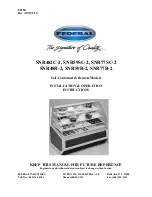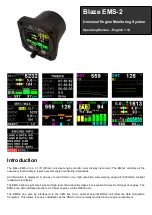
PRIMUS
r
1000 Integrated Avionics System
A28--1146--112--00
PRIMUS
â
660 Weather Radar System
B--12
MAXIMUM PERMISSIBLE EXPOSURE LEVEL (MPEL)
Heating and radiation effects of weather radar can be hazardous to life.
Personnel should remain at a distance greater than
R
(shown in figure
B--6) from the radiating antenna in order to be outside the envelope in
which radiation exposure levels equal or exceed 10 mW/cm
2
, the limit
recommended in FAA Advisory Circular AC No. 20--68B, August 8,
1980, Subject:
Recommended Radiation Safety Precautions for
Ground Operation of Airborne Weather Radar
. The radius,
R
,
distance to the maximum permissible exposure level boundary is
calculated for the radar system on the basis of radiator diameter, rated
peak--power output, and duty cycle. The greater of the distances
calculated for either the far--field or near--field is based on the
recommendations outlined in AC No. 20--68B.
The American National Standards Institute, in their document ANSI
C95.1--1982, recommends an exposure level of no more than 5
mW/cm
2
.
Honeywell Inc. recommends that operators follow the 5 mW/cm
2
standard. Figure B--6 shows the MPEL for the 12--inch antenna and
PRIMUS
R
660 Weather Radar power.
2
MPEL Boundary
Figure B--6





































